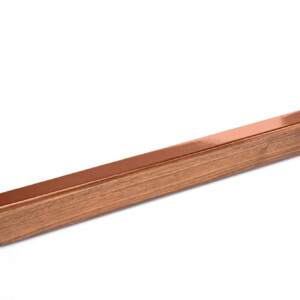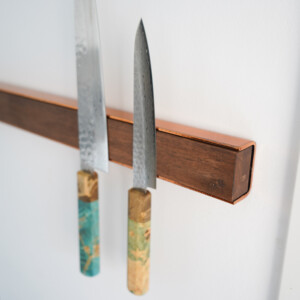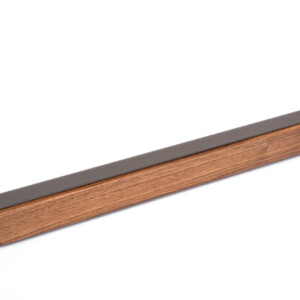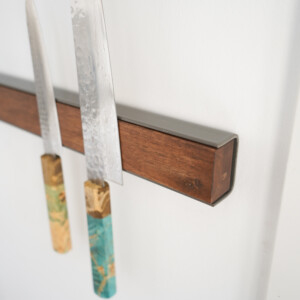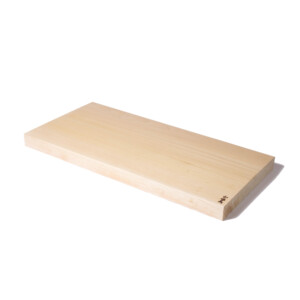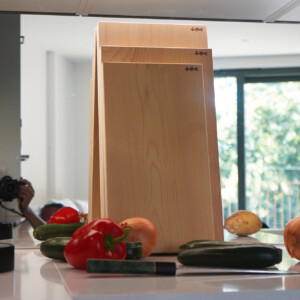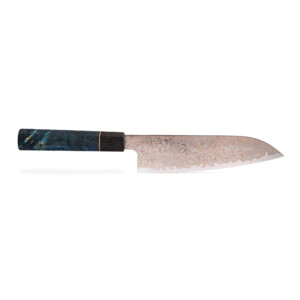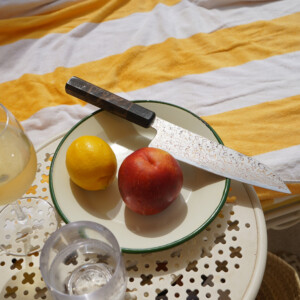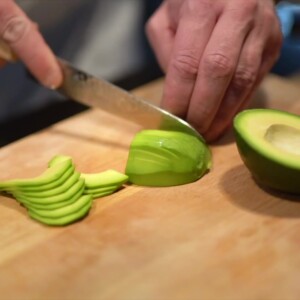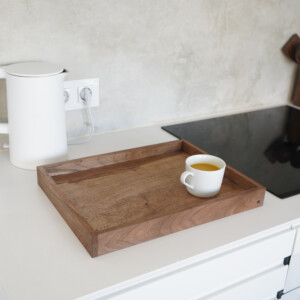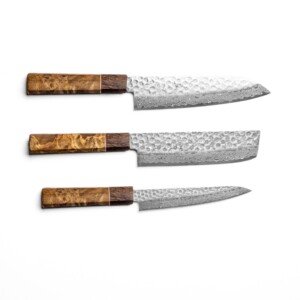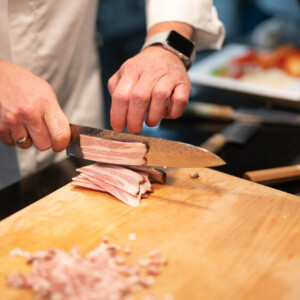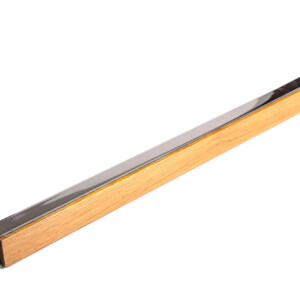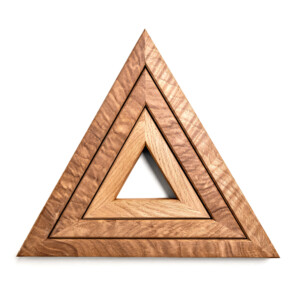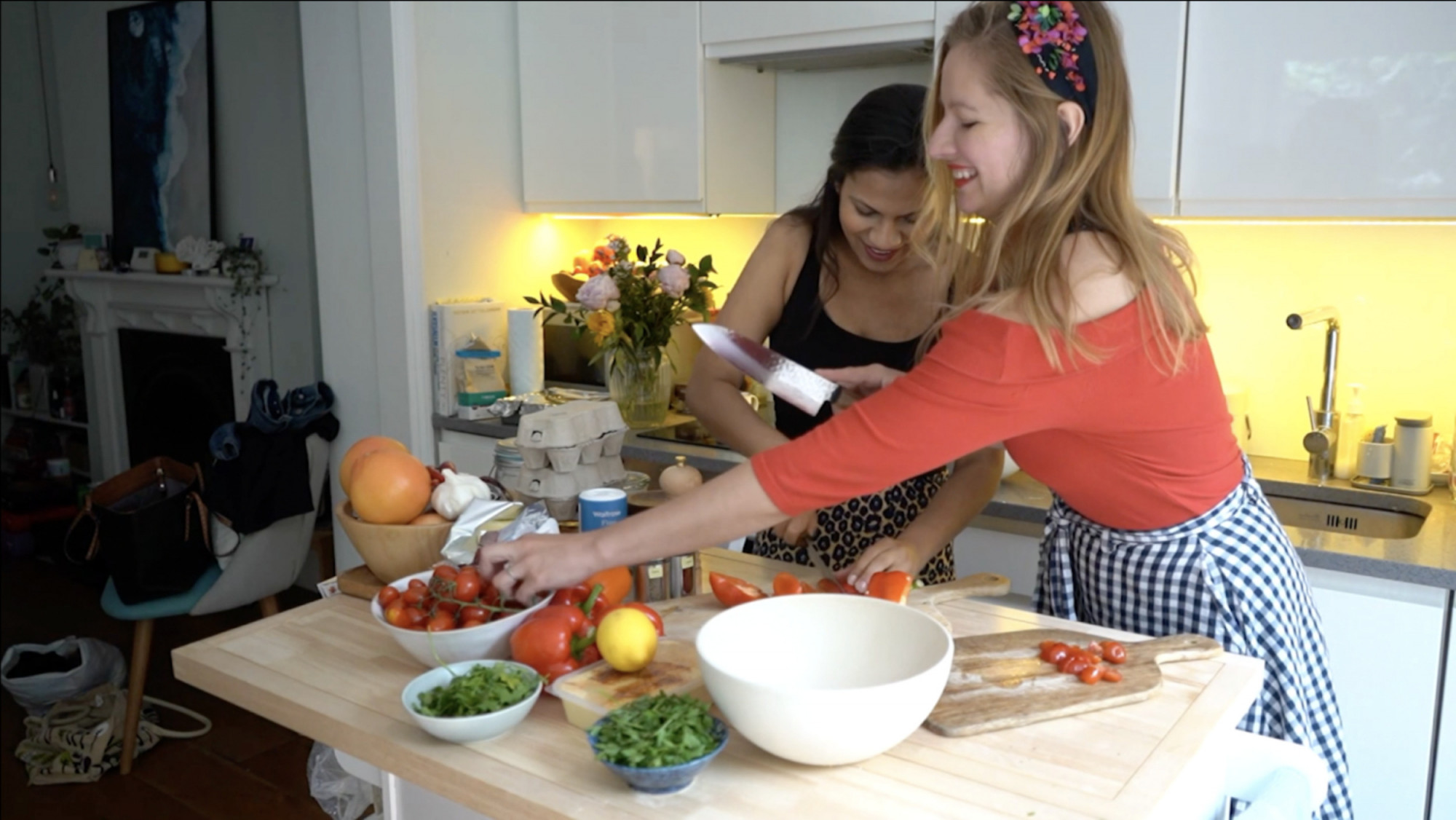The eternal problem – how to best store your knives and other tools which you often reach for? When it comes to storing your quality knives, there are few solutions which you may want to consider. There are few main options for storage: knife drawers, knife blocks, magnetic knife holder and blocks.
Finding the right home for them is more than just a question of kitchen organisation. The right knife storage can help your knives stay sharper longer, and help your kitchen look fancier, too.
We’ve decided to list their main pros and cons to make it easy to choose the option that suits you. If you’re looking for quick tip, we’ve prepared for you this comparison table:
| Magnetic Wall Strips | Knife Blocks | Under the Cabinet | Drawer Docks | |
|---|---|---|---|---|
| Counterspace | No impact | Takes up space | No impact | No impact |
| Usability | Superb | Superb | Moderate | Moderate |
| Sanitation | Superb | Poor (traditional wooden blocks) to Superb (magnetic knife holder / blocks) | Moderate | Moderate |
| Child Safety | Good if mounted high Enough | Poor | Moderate | Superb when paired with a child-proof drawer locks. |
| Price | Inexpensive to moderately expensive | Inexpensive To moderately expensive | Moderately Expensive | Inexpensive to moderately expensive |
Read below for more detailed insights with pros and cons for each of the options:
The Knife Drawer
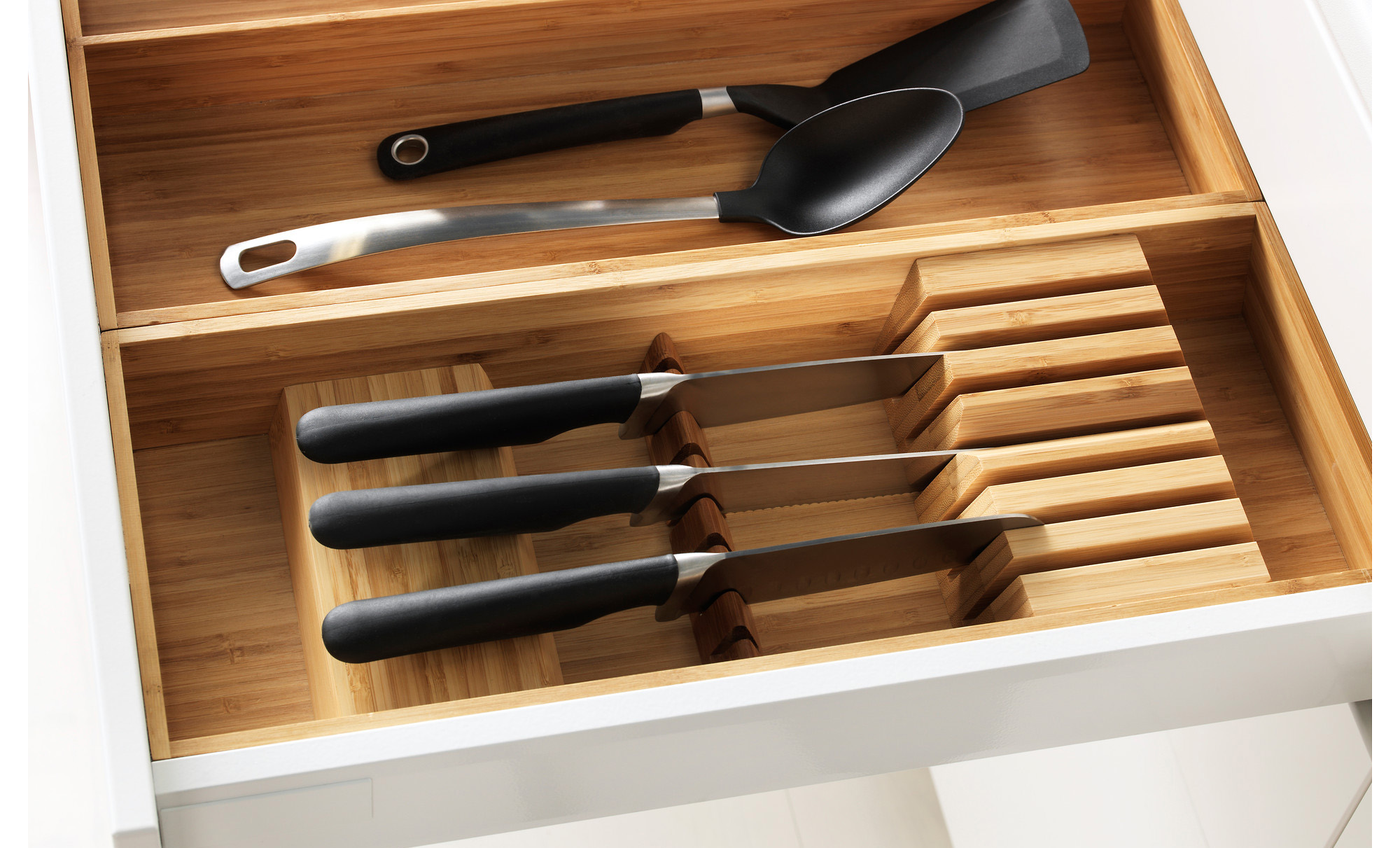
The first problem with drawer trays is finding ones to fit your knives. Deba that’s too thick? Extra long filleting knives? What about all these little kitchen tools that are odd sizes? You’re out of luck for those Ikea standards. Another issue is space – many people don’t have drawers to spare. What most of us have, however, is plenty of wall space. Some cooks even joke that they would rather have guitars and knives up than paintings around home.
Other than using an in-drawer knife block storage method, we strongly suggest avoiding this unless you have absolutely no other choice. Loose storage of knife blades in a drawer can chip the handle or the blade itself. Knives will go dull easily, and you could even break the knives when too much strength is applied when opening/closing the drawers.
If you really want to store your kitchen knives in a drawer, never leave them loose. Invest in sayas or other knife covers. For an easy and cost-effective option, you can roll your cooking knives in materials and then put them in the drawer.
Pros: In-drawer knife storage keeps your knives out of the way and off the counter. You can put extra safety blocks if you have small children at home. In-drawer knives storage is also useful in small kitchens that have enough drawer space.
Cons: If you have children, storing knives in a drawer isn’t safe. However, you could install a lock on your knife drawer, but that means it is a pain to access your knives when you need them. Also, the blades would have to be stored upright, and that vertical position puts stress on the blades, just like a block, meaning you’ll have to store them upside down and blade up to protect the blades. Accident waiting to happen!
The Knife Block / Stand (Non-Magnetic)
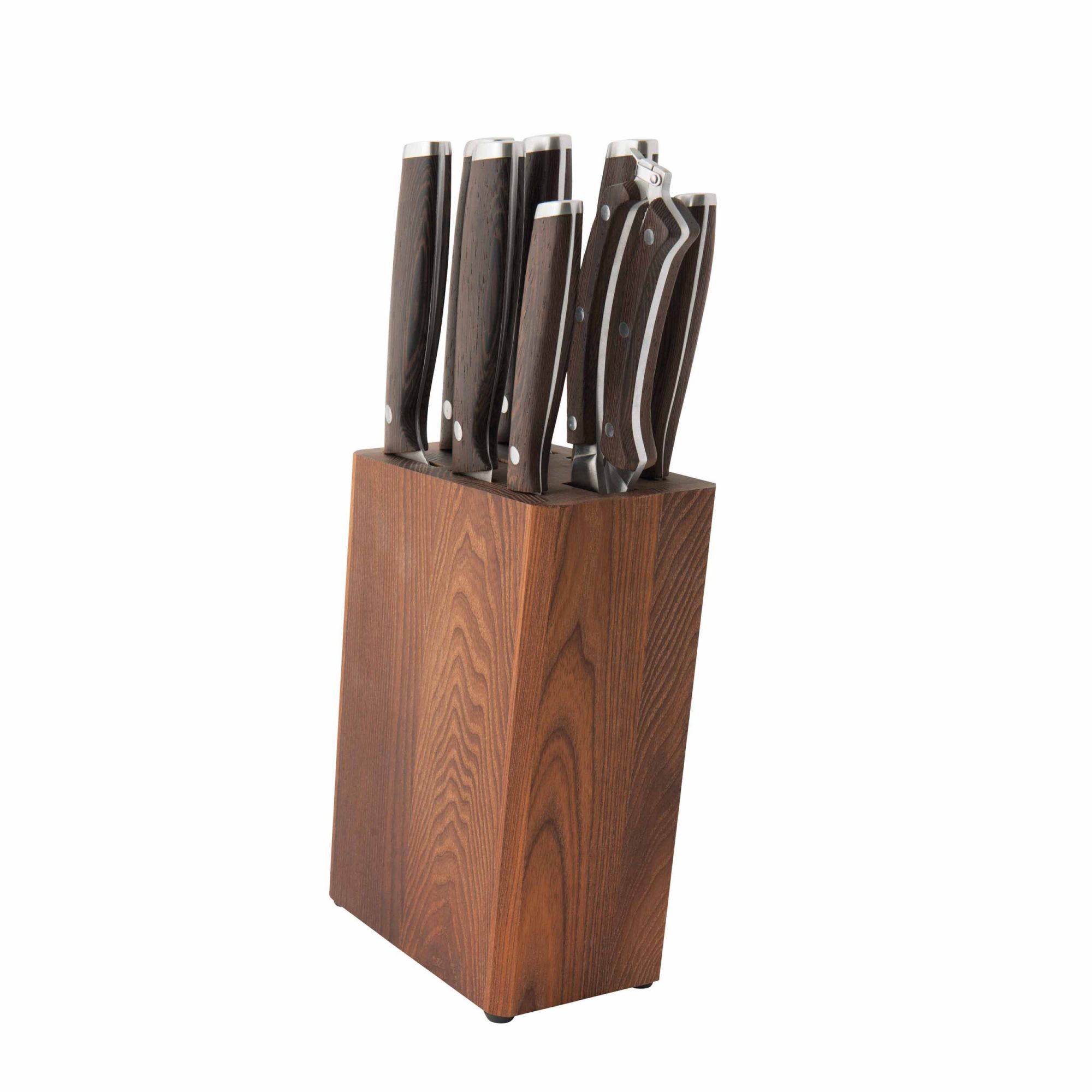
This seems to be the most common form of storage for commercial knife sets, since many knife sets come with their own knife block storage, and many people buy an empty knife block to store knives purchased separately. Countertop kitchen knife holders like these seem ideal. However, knife blocks also have some limitations depending on the block itself. Universal knife blocks can overcome some of those issues.
Pros: You’ll have all your kitchen knives in one place, and storing knives in the block can help keep the edge longer, as well as avoiding accidents between fingers and knives when reaching for them.
Cons: Bad idea for those kitchen knives of different thickness, shapes and sizes. If your knife block doesn’t come with your specific knife set, the pre-sized knife slots are may not fit your knives, especially if you do like we do, and acquire additional preferred knives outside the knife block set. Also, you need to be sure to get a block that stores knives sideways to prevent dulling of the knife blades. If you have to have a vertical storage knife block, store your knives upside down to protect the edges. Unfortunately that does add a safety issue, so sideways storage is best. Or you could find a block that uses plastic storage rods or other material that doesn’t harm the knives resting on them.
Blocks tend to blunt the blades as they normally get dragged over the wood every time. If you are not careful, they are the perfect spot for growing nasties which can help spread food poisoning due to just plain nasty looking gunk that’s near impossible to clean out.
Magnetic Racks (Strips) and Magnetic Stands
Wall mounted magnetic knife holder example:
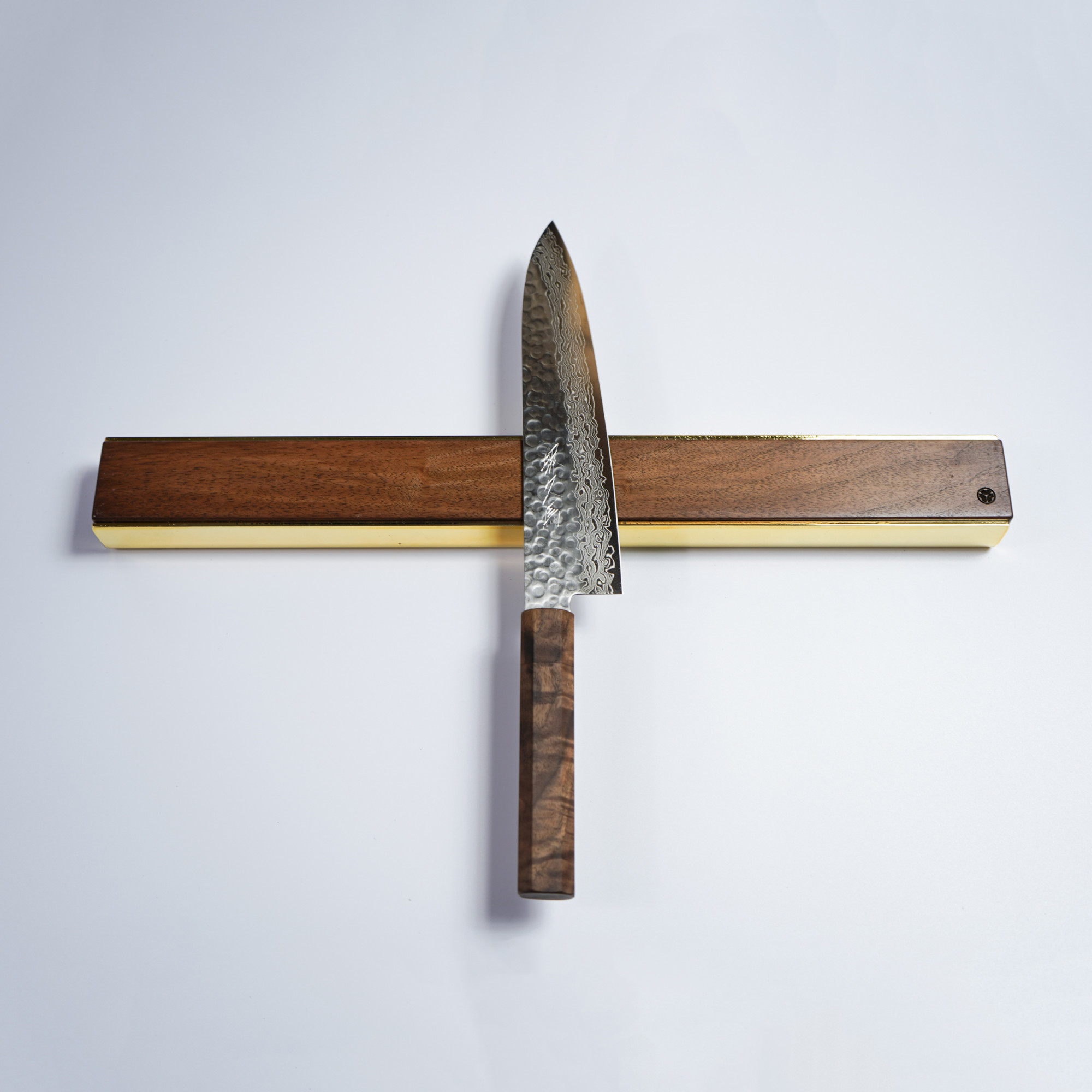
Countertop magnetic knife holder example:
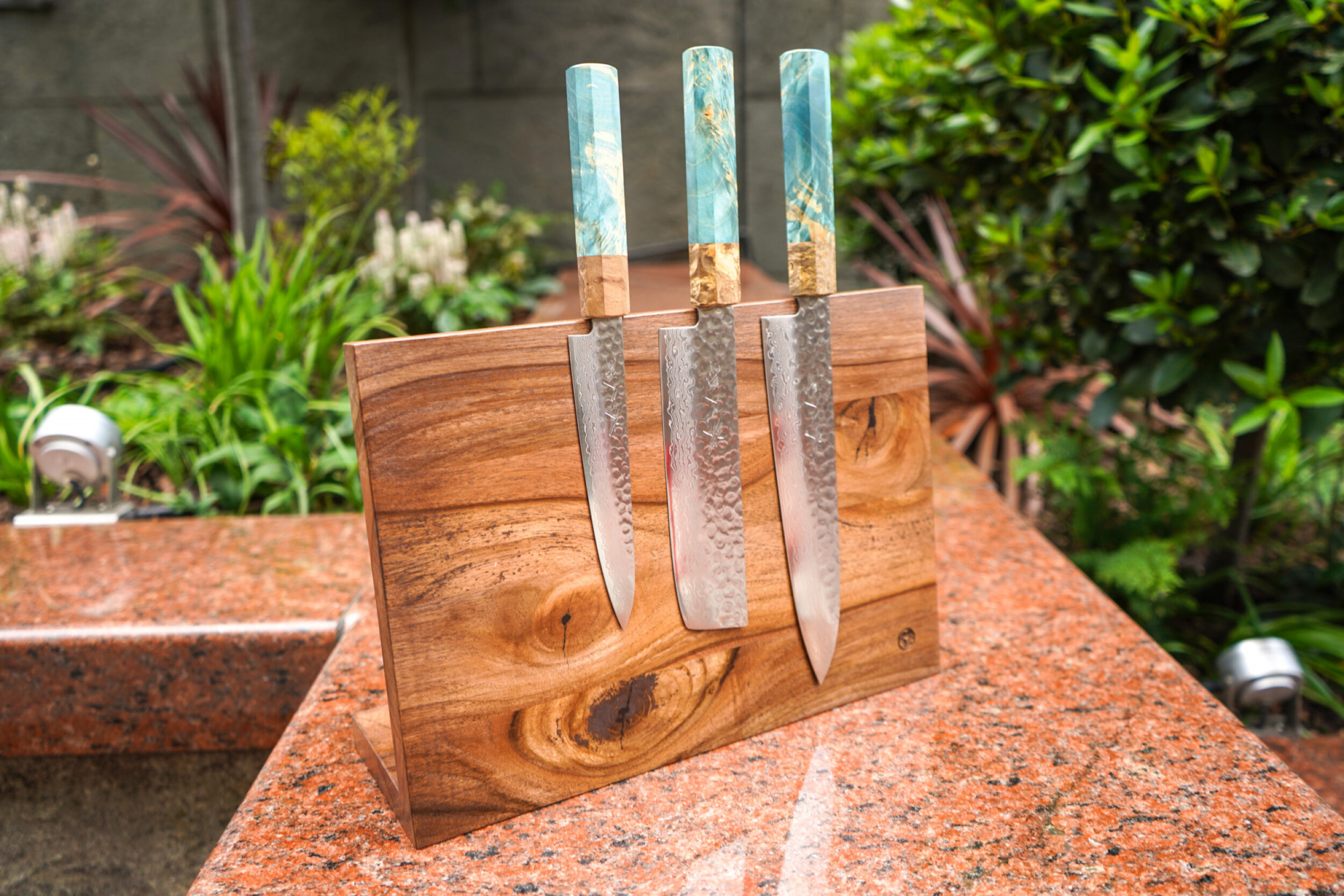
Magnetic accessories such as magnetic knife holders or magnetic blocks are – in our humble opinion – the best and safest solution. Some people believe that magnetic knife racks and blocks could possibly cause misalignment on a molecular level – nothing further from the truth! We brought up this conversation with a mechanical engineer once and he assured us that that was impossible. If you’re looking to get a magnetic knife holder, either stand or a strip, look for one that has strong, durable neodymium magnets hidden inside. That’s especially important for your safety, when it comes to wall mounted knife strips. The cheaper versions of holders usually have standard magnets which loose their strength quite fast – and in effect, your knives easily slide off the surface.
Good magnetic knife holders and blocks have their magnetic part hidden inside the wood so they are neat, perfectly safe for your knives and still extremely strong. Good magnetic knife strips hold the knives firmly on the rack and pull them close with a nice slapping noise. If you’re going for the wall strip, get one which has other than metal surface. Wooden or leather covered surface is perfect, as unlike metal magnetic racks, it protects the blade from chipping or scratching.
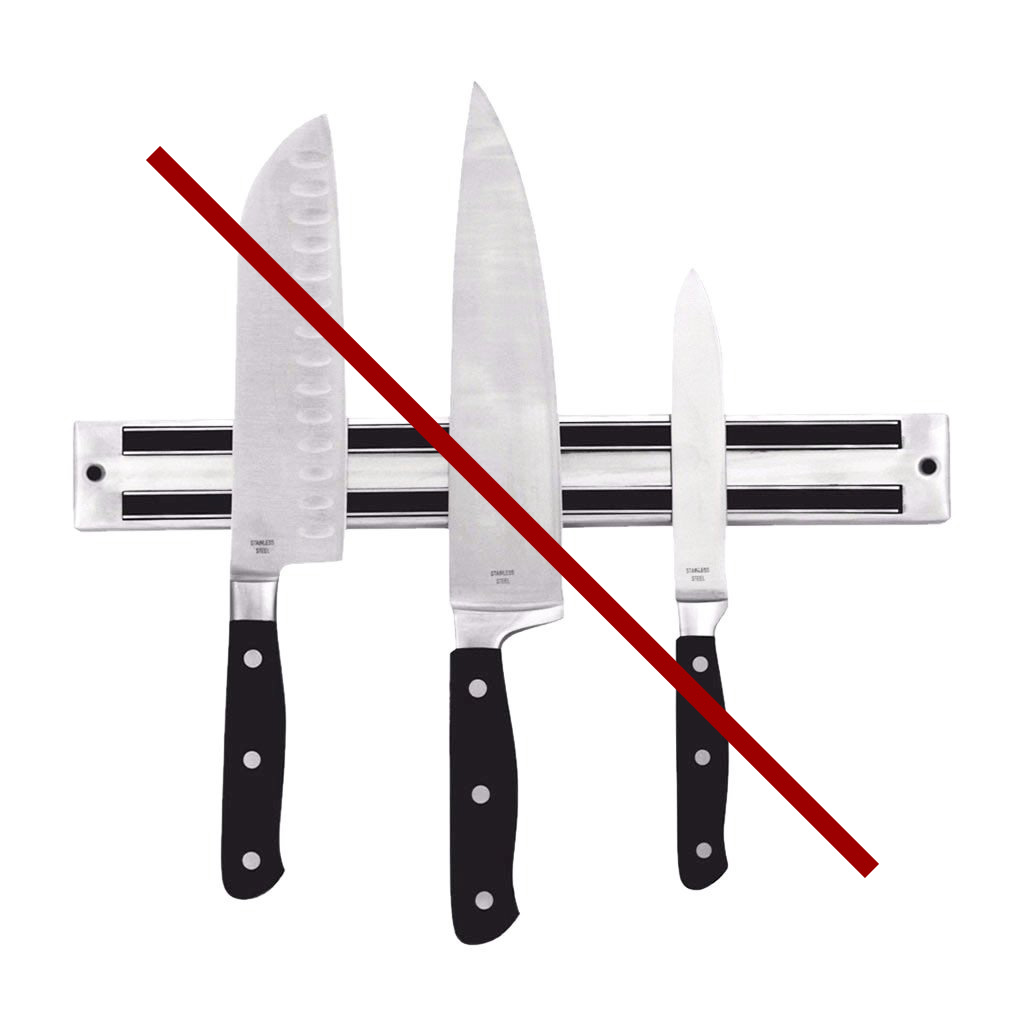
When it comes to way of hanging the knives on the wall holder, some people hang their knives upside down, others handle-down. It’s whatever feels more comfortable for you.
Pros: Racks are an easy way to organise your knife blades and keep them safely off the counter. They are quickly available as all you have to do is reach up and grab your knife of choice. And, most importantly, they keep your knife blades stable, which avoids damage to the knife or its edge.
Cons: Magnetic holders put pressure on the tang of the knife when removed, so if you don’t have a full tang knife, it can stress the knife stability over time. Magnetic racks aren’t safe with children in the kitchen unless the magnetic knife holder is mounted high enough that even the knife bottoms are out of your children’s reach. And, as you may have already guessed, you also can’t use them with ceramic knives.
What if you’re a parent of a small child?
The kitchen is a compelling place for kids, with parents hushing around, prepping meals, pulling colourful items from the refrigerator. Cooking and baking can be a very enjoyable time for the family, so naturally knives play a big part of kitchen activities. With everything going on, your divided attention, and kids’ excitement, it’s important to make sure you have good knife habits, but also to store knives properly.
Reduce the risks of accidents and problems with these tips:
- Never keep your knife close to the edge of counters or appliances where little hands can reach them. It is important to remind yourself and others in the kitchen of this every day.
- For that reason installing a wall knife hanger high enough so it’s inaccessible for your children is a good idea. Another way is to keep your knives in a child-proof drawer (covering them in wooden sayas or kitchen roll materials is a good option but it’s also very time consuming).
- Never let your knives roam free in a drawer. There’s a possibility that, if the knives are left free in the drawer, the kids, or you, may end up getting cut. Not only that, but, rattling around in a drawer will damage the blades.
- Never keep your knives in a wet sink, especially overnight (especially if you have high carbon knives which rust easily when in wet for too long). Wet, slippery sinks are where rust can easily form, damaging the blade of the knife. It’s always best to wash your kitchen knives (and dry them) as soon as you’re done using them. Or, at least, wash your knives first when doing the dishes. This is not just good for the blades, but also keeps kids from accidentally hurting themselves putting hands in a murky or bubbly sink of water.
Last notes on a proper knife care
Storing your knives in the right way is not enough. As we already mentioned in this article, you have to remember about a few things to keep your shiny knives in top working order for longer.
- You have to have them sharpened regularly and cleaned after use.
- You also need to keep them out of the dishwasher.
- Or don’t leave them in the sink.
- Or remembering of drying them before storing them
There are a number of reasons for this, including:
- Sanitary reasons: The longer you wait to clean your knives after use, the more likely the knives will not be washed properly and food particles can accumulate. Also, with poor storage, the knife blades may not be stored in sanitary conditions, meaning reuse could result in an unsanitary blade. Germs anyone?
- Preventing damage to the knife blades: If the blades aren’t completely clean and dried properly before storage, the blades can start to deteriorate and dull the edges or even damage the knife construction.
- Avoiding spotting or metal corrosion: If you work with tomatoes or citrus or other acidic foods, not cleaning, drying and storing your knives immediately and correctly can cause corrosion or deterioration to the metal. Spotting is also pretty common and that is a sign that the blade material is being damaged slowly.
- Avoiding dulling the blades: Washing your knives in the dishwasher — even if they are dishwasher-safe — is a bad practice. In the dishwasher, your knife blades are exposed to damage from knocking against other items. And detergents are harsh on the blades. Plus the high heat of a dishwasher can also deteriorate the blade edge.
- Use the right wooden cutting boards – some woods dull the knives as they are too hard
(For more advice check our article about 10 knife care tips learned from master blacksmiths.)
The choice is yours
Although you’ve got a lot of options for storing your knives and knife sets safely to avoid damage or deterioration and still maintain knife safety in the kitchen, for us, magnetic knife holder or a stand is with no doubt the best way to store and care for our knives. Not only it’s the best way to display your knife collection (we can see these envy looks of your guests already), it’s also the most ergonomic and safe way to keep sharp objects in your home.
